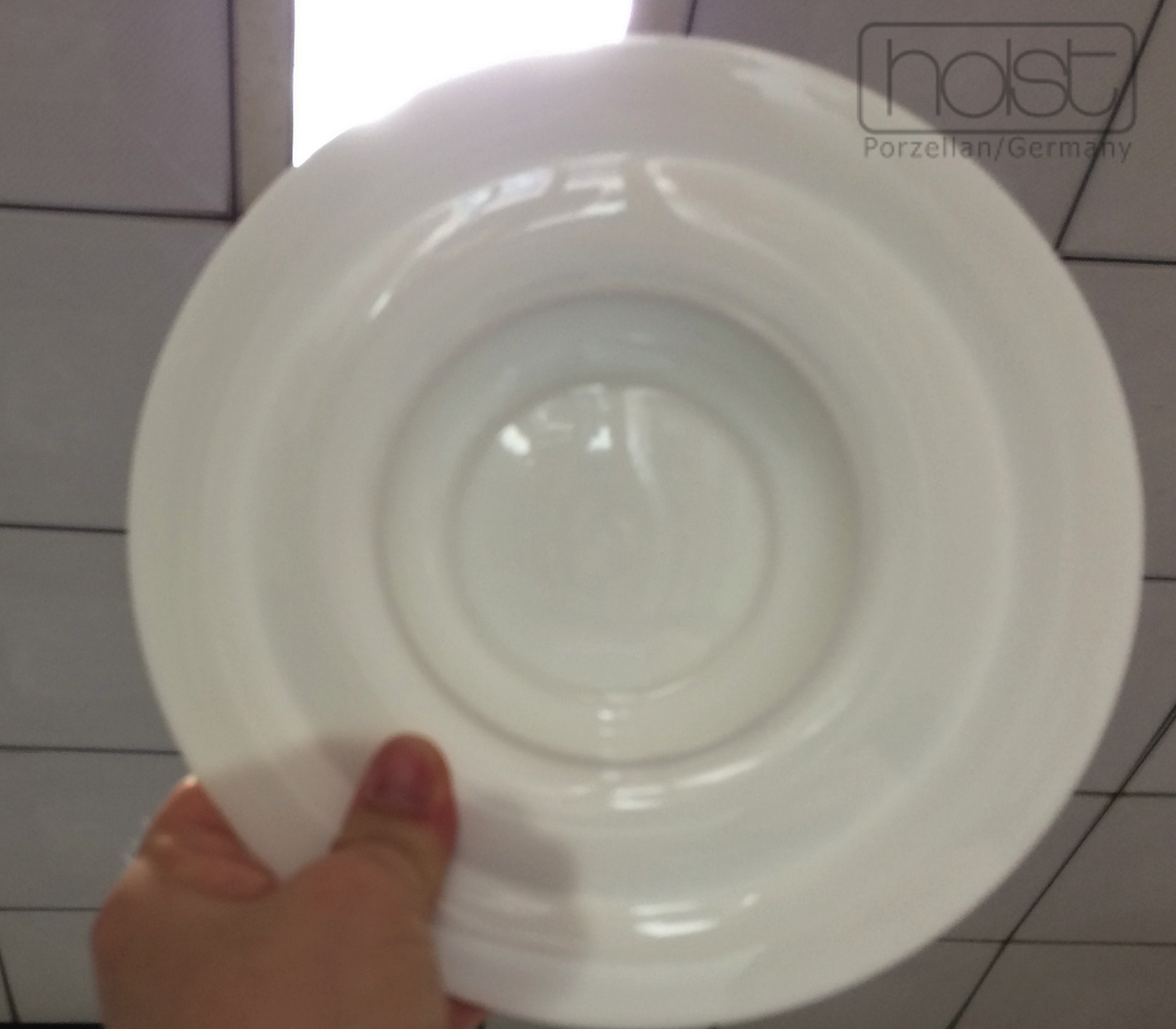Transparency
Transparency of porcelain - from the knowledge of Holst Porzellan/Germany

Explanation of the transparency of porcelain
In almost every textbook, "transparency" is mentioned as a striking characteristic of porcelain. But not even Hans Friedl managed to explain "why - why - and why" in his porcelain bible "100 questions about porcelain". Most of the participants in our industry - on the manufacturer, dealer and customer side - do not have a degree in physics or mineralogical knowledge. This explains why the transparency of porcelain as a property and term is not "transparent" for us. We are now changing this with this explanation and the following video.
During the sintering of the mineral raw materials kaolin, feldspar and quartz (among others) in hard or glost firing, a fusion with a simultaneous "vitrification" of the body occurs. This firing section in the kiln is called "glass phase". In addition to mullite, hundreds of thousands of microscopically small, translucent crystal compounds are formed which are not visible to the naked eye, since the porcelain body has an enormous density and minimal porosity after hard firing. Apparently, the porcelain has a white body color and is provided with a transparent glaze. As long as a colored, pigmented glaze or one containing colored minerals does not cover the body in a light-proof manner, the transparency of the porcelain is retained.
Many consumers have the misconception that the more transparent - i.e. the more translucent - a shard is, the better the quality. This is wrong and a misconception! The only formula that applies is that the thinner a cullet is formed, the higher its transparency. A characteristic for quality determination is not based on this. The visible transparency of the semi-thick hotel sherd is lower than that of household porcelain because the sherd is thicker or more solid. The thicker the body, the higher is its own light absorption by the layers lying on top of each other.
Transparency is the reason why ceramics are called ceramics and magnesium porcelain and vitreous are called imitation porcelain: because they imitate the transparency of porcelain as the result of a raw material melt of kaolin, quartz and feldspar through the admixture of less high-quality and denser raw materials.
Here now our video for the quality determination of ceramic bodies by the light test.
Harnesses of high transparency
this optical aspect comes into play and is primarily considered by many private consumers as a quality-designating feature. When light hits porcelain, about 4% is reflected. Unfortunately, this perception is wrong! A high light transmission is not a characteristic for a high quality! According to this, hard glass, due to its high transparency, would be classified qualitatively higher than porcelain and this is not the case at all.
Scientific definition
Transparency, derived from the Latin "trans" (through) and "apparere" (to shine), is in physics the ability of matter to let electromagnetic waves pass through. In everyday life, the term usually refers to light, i.e. to the spectral range of electromagnetic radiation visible to humans.
Transparency is an optical property of a material, as well as reflection and absorption capacity. The optical properties of materials are closely related to the electrical properties of a material, such as the presence of free electrons or the band structure. If a material is transparent to incident electromagnetic radiation (photons) of a more or less broad frequency spectrum, this radiation can penetrate the material almost completely, i.e. it is hardly reflected and hardly absorbed. Due to its density and mineralogical structure, porcelain absorbs a high proportion of the spectral range visible to humans (light).
Transferred to the shards of porcelain this means in the body itself there is a further loss through absorption, which is relatively low at the usual low Fe,O;-contents. The most significant loss of light intensity is caused by the scattering of grain boundaries in the porcelain. This scattering is all the greater the more grain boundaries are present and the greater the difference in refractive indices of the phases involved. If the intensity of the incident light beam is /o, that of the passing 7, then its dependence on the layer thickness results when the reflection is neglected.
